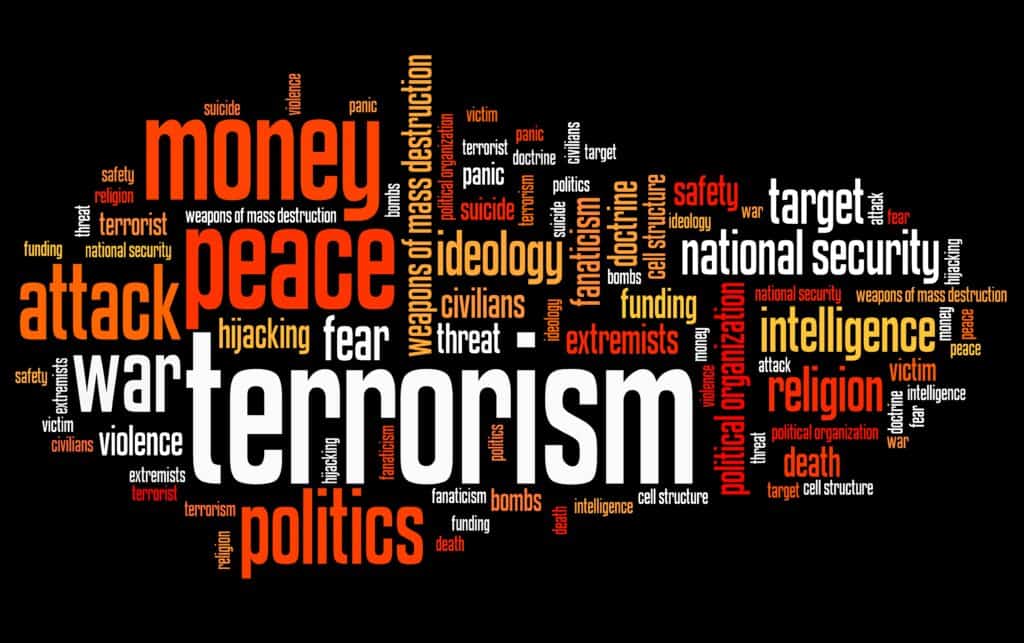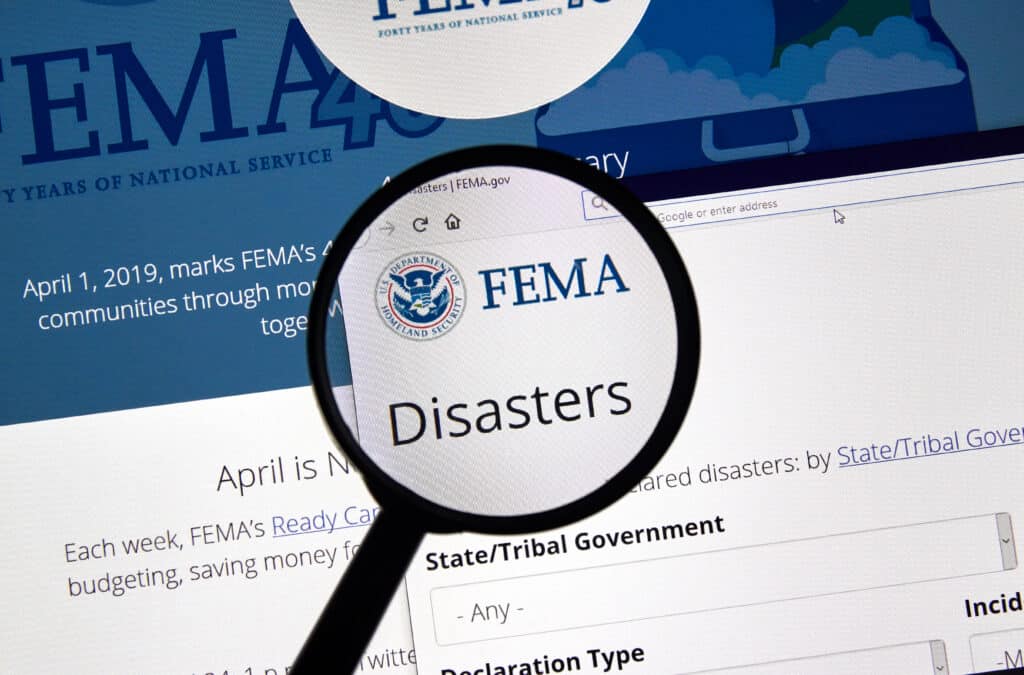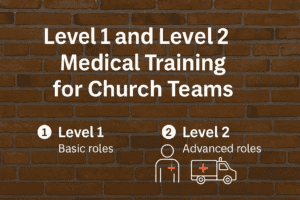A THIRA, or Threat and Hazard Identification and Risk Assessment, is a comprehensive approach to emergency preparedness and response planning. This essential tool helps communities identify potential threats and hazards, evaluate their vulnerabilities, and determine the resources needed to address these risks effectively. By ensuring that communities are aware of the dangers they face and assessing their ability to respond, a THIRA promotes a proactive rather than reactive mindset, ultimately increasing the resilience of communities against natural and human-made disasters.
The process of conducting a THIRA involves collaboration among local stakeholders, including emergency management agencies, first responders, government officials, and community organizations. These groups gather information on potential threats and hazards, assess the potential impact on critical infrastructure and key resources, and prioritize their response capabilities. With this information, the community can develop strategies and allocate resources to mitigate potential crises and improve overall preparedness.
In addition to enhancing local resilience, a THIRA also serves as a key input for federal programs and initiatives aimed at supporting community-wide disaster preparedness. By providing a systematic and transparent method for identifying and prioritizing risks, the THIRA enables decision-makers at all levels to make more informed choices and investments in emergency management resources, ultimately increasing the safety and security of communities across the country.
THIRA Overview
A Threat and Hazard Identification and Risk Assessment (THIRA) is a systematic approach to identifying and evaluating risks posed by various threats and hazards in a specific area or community. Developed by the Federal Emergency Management Agency (FEMA), THIRA is a vital component of the agency’s Comprehensive Preparedness Guide (CPG) 201, which provides guidance and tools to help communities effectively mitigate, respond to, and recover from incidents.
THIRA helps communities assess their vulnerabilities to natural, technological, and human-caused threats by considering various factors such as the likelihood and potential magnitude of events. This assessment process enables local governments and organizations to prioritize resources, establish goals, and develop more realistic, targeted response plans.
The THIRA process consists of four steps: identifying threats and hazards, giving context to these threats and hazards, establishing capability targets, and applying the results. During the identification phase, a community lists all possible threats and hazards that could potentially impact them. Next, the community describes how these events might unfold, including potential vulnerable populations, infrastructure, and impacts on the environment. Thirdly, capability targets are established based on the anticipated response requirements. Finally, the community uses THIRA results to inform other aspects of emergency planning, such as resource allocation and training efforts.
By conducting a THIRA, communities can gain a greater understanding of their risks, identify specific capabilities and resources needed to address these risks, and provide a solid foundation for creating a more resilient and prepared community. Adhering to FEMA’s guidelines and utilizing the THIRA process can significantly enhance a jurisdiction’s overall preparedness and response capabilities.
Core Components
Risk Assessment
The process of assessing risks is crucial for determining the expected impact of specific threats and hazards. Risk assessment helps identify areas where improvements are needed by evaluating the likelihood and severity of incidents. It involves:
- Identifying the relevant threats and hazards
- Estimating the potential impact on communities
- Assessing the vulnerability and resilience of the communities
Threat and Hazard Identification
Threat and hazard identification focuses on examining the various threats and hazards that could harm communities. These elements can be natural, technological, or human-caused. The objective is to create a comprehensive understanding of the potential events that can lead to disruptions, destruction, or loss of life. Some examples include:
- Natural: hurricanes, earthquakes, floods, wildfires
- Technological: industrial accidents, cyberattacks, infrastructure failures
- Human-caused: terrorism, civil unrest, pandemics
Capability Targets
Capability targets provide a measurable way to evaluate the preparedness of a community to handle the identified threats and hazards. Setting specific targets for capabilities is essential for developing effective response strategies. They assist in:
- Establishing goals and objectives for preparedness and response
- Identifying gaps in resources or training
- Prioritizing investments in emergency management efforts
Some examples of capability targets include the time it takes for emergency services to respond to incidents, the number of trained first responders, and the capacity of emergency shelters. By defining and measuring capability targets, communities can effectively assess their preparedness for a range of potential threats and hazards they may face.
Stakeholder Preparedness Review
A Stakeholder Preparedness Review is an essential component of the Threat and Hazard Identification and Risk Assessment (THIRA) process. It involves assessing the readiness of various stakeholders to manage risks and respond to threats effectively. This encompasses the planning and coordination of efforts by entities such as local governments, first responders, private sector organizations, and community members.
In a Stakeholder Preparedness Review, the primary objective is to identify potential gaps in current capabilities and develop appropriate strategies to address these vulnerabilities. This is accomplished by evaluating the plans, policies, and procedures implemented by the stakeholders. Here are some key components to consider:
- Comprehensive Planning: A well-drafted emergency management plan is crucial for ensuring that all stakeholders maintain a solid foundation for their response efforts. This plan should cover elements such as risk assessment, stakeholder roles and responsibilities, communication, and training.
- Coordination and Collaboration: Effective communication and decision-making among stakeholders are vital for efficient response efforts. By fostering collaboration, stakeholders can share resources, expertise, and information, reducing redundancies in their overall preparedness efforts.
- Training and Exercises: Regularly conducting training and exercises can help stakeholders to stay prepared, identify gaps in their capabilities, and improve their response strategies. These activities should involve joint collaboration to promote better interagency coordination.
- Capacity Building: A key aspect of preparedness is having the necessary resources, infrastructure, and personnel to manage threats and hazards. Enhancing the capacity of stakeholders by investing in equipment, technology, and human resources can lead to increased incident management capabilities.
- Learning Management System (LMS): Implementing a user-friendly LMS can facilitate training and education for stakeholders. With an LMS in place, stakeholders can take courses, complete assessments, and track their progress, ensuring that everyone remains up-to-date with the latest policies and procedures.
By conducting a thorough Stakeholder Preparedness Review, entities involved in the THIRA process can work together to enhance their capabilities and resilience in the face of potential threats and hazards. This proactive approach ensures that all stakeholders are well-prepared to protect their communities when the need arises.
Mitigation Planning
Mitigation planning is an essential process in reducing the impact of threats and hazards on communities and infrastructure. It involves identifying potential risks, assessing their likelihood and severity, and implementing strategies to minimize or prevent their effects.
One of the primary goals of mitigation planning is to reduce the vulnerability of communities to disasters or emergencies. This can be accomplished through various means, such as land-use planning, structural improvements, and adopting policies and procedures that promote resilience.
For instance, land-use planning can help communities avoid building in high-risk areas, such as floodplains or areas prone to wildfires. Structural improvements might involve retrofitting buildings to withstand earthquakes or constructing infrastructure that protects against storm surges. Policies and procedures may include adopting building codes, implementing mitigation projects, and establishing emergency response plans.
Mitigation planning also involves collaboration among various stakeholders, including local, state, and federal agencies, as well as private sector organizations and individuals. This collaborative process ensures that all relevant parties are involved in identifying and addressing threats and hazards.
A successful mitigation plan requires a comprehensive understanding of the threats and hazards facing a community. This can be achieved by conducting a Threat and Hazard Identification and Risk Assessment (THIRA). THIRA is a systematic approach that helps communities identify the most significant risks and informs their decisions on which mitigation strategies to implement.
A typical THIRA process involves four steps:
- Identify threats and hazards: Gather information on the natural, technological, and human-caused hazards that may impact the community.
- Assess consequences: Evaluate the potential impact of each hazard based on factors such as the severity of the event, the vulnerability of people and infrastructure, and the community’s overall resilience.
- Estimate likelihood: Use historical data and expert opinions to determine the probability of each hazard occurring.
- Determine priorities and allocate resources: Identify the highest priority threats and hazards, and develop strategies for reducing their impact.
Overall, mitigation planning plays a crucial role in helping communities become more resilient in the face of threats and hazards. By identifying potential risks and implementing targeted strategies, communities can reduce the physical, social, and economic impacts of disasters and emergencies.
National Risk and Capability Assessment

National Preparedness Reports
The National Risk and Capability Assessment (NRCA) is a crucial tool for evaluating and addressing potential threats and vulnerabilities at the national level. One of its components is the National Preparedness Reports. These are annual documents released by the Federal Emergency Management Agency (FEMA) that highlight progress in national preparedness and identify areas for improvement. The reports provide valuable insights into the nation’s ability to prevent, protect against, mitigate, respond to, and recover from disasters and emergencies.
National Risks
Another vital aspect of the NRCA is determining the National Risks faced by a country. The assessment identifies potential hazards, such as natural disasters, terrorism threats, and pandemics, that could have a significant impact on the nation’s security, economy, or public health. By analyzing these risks, authorities can prioritize resources, develop appropriate mitigation strategies, and enhance overall preparedness.
Jurisdictions
The NRCA also plays an essential role in guiding Jurisdictions at various levels, including federal, state, and local governments. Through the Assessment Guide, these entities receive comprehensive guidelines on conducting their own Threat and Hazard Identification and Risk Assessment (THIRA) processes, enabling them to effectively evaluate their specific vulnerabilities and capabilities. By aligning local assessments with the national framework, the NRCA promotes a cohesive approach to preparedness across all jurisdictions and fosters better coordination and collaboration during an emergency or disaster response.
Assessment Guide and Products
A Threat and Hazard Identification and Risk Assessment (THIRA) is a systematic approach used to assess potential risks and hazards faced by communities. The assessment process helps in developing specific strategies and capabilities to mitigate potential threats.
The THIRA process involves taking a coordinated approach to evaluate risks and identify vulnerable areas. This process helps in developing effective response strategies and plans for communities who face such threats. Various assessment products are available to guide and support the THIRA processes.
Assessment products and tools include guidelines, methodologies, and templates that assist stakeholders in identifying and prioritizing threats and hazards. These products aid in understanding the potential consequences that can result from different threats and help in prioritizing resources to address the most significant risks.
During the THIRA process, stakeholders participate in collaborative workshops and discussions. These coordinated activities enable stakeholders to share essential information and insights about potential threats, and their unique perspectives contribute to the development of a more comprehensive overview of risks. Participants in the THIRA process can include representatives from government agencies, emergency responders, private sector entities, and community organizations.
Some key aspects to consider in the assessment process involve:
- Identifying and understanding potential threats and hazards to the community
- Evaluating the vulnerability and potential impact of each hazard
- Estimating the consequences and likelihood of each threat
- Analyzing the resources required to address these risks
- Prioritizing hazards based on their potential impact and capabilities to prevent or mitigate these effects
The THIRA process produces a range of outputs, including planning documents, hazard prioritization lists, and assessments of the resources and capabilities needed to address risks. These outputs can be used as a basis for allocating available resources effectively and planning for reduced vulnerability and increased resilience.
In conclusion, the THIRA process is a valuable method for assessing risks and developing a comprehensive understanding of potential hazards. Assessment guides and products help facilitate a coordinated approach, leading to more effective response strategies and ultimately resulting in increased resilience and preparedness for communities facing threats.
Gaps and Resilience
Capability Gaps
Capability gaps are the difference between an organization’s existing abilities and the core capabilities required to successfully address threats and hazards. Identifying these gaps helps to prioritize resource allocation and improve emergency preparedness, ultimately reducing the impact of potential disasters.
To assess capability gaps, it is essential to evaluate the organization’s current resources and capacities against the desired outcomes, such as response time, coordination, and communication. This can be done using various assessment tools, such as surveys, evaluations, or exercises.
Some common capability gaps include:
- Insufficient staffing or personnel
- Inadequate equipment or resources
- Limited training or expertise
- Underdeveloped coordination or communication processes
- Poorly defined roles and responsibilities
Addressing these gaps requires a focused approach, targeting specific areas that need improvement and allocating resources accordingly.
Building Organizational Resilience
Organizational resilience is the ability of an organization to adapt and recover from disruptive events, such as natural disasters, terrorist attacks, or cyber incidents. Building resilience involves developing a robust and flexible system that can withstand shocks, manage risks, and continue to provide essential services despite adversity.
There are several strategies to build organizational resilience, including:
- Risk Assessment and Mitigation: Understanding the potential threats and hazards faced by the organization, and implementing measures to reduce their impact.
- Business Continuity Planning: Developing plans to ensure the continuation of essential functions and services during and after a disruptive event.
- Emergency Preparedness: Establishing and maintaining plans, procedures, and training to respond effectively to various incident scenarios.
- Information Sharing and Coordination: Fostering effective communication and coordination among internal and external stakeholders, especially during crisis situations,
- Resource Management: Efficient allocation and utilization of resources to address capability gaps and strengthen core capabilities.
Incorporating resilience within all aspects of the organization ensures a smoother recovery and helps to minimize the impacts, both short-term and long-term, of disruptive events. Building organizational resilience also supports the development of a more robust, adaptable, and resilient society, capable of withstanding diverse threats and hazards.
Emergency Management
Effective emergency management requires a comprehensive approach, and THIRA (Threat Hazard Identification and Risk Assessment) is an essential part of this process. THIRA is a systematic method to identify potential threats and hazards, assess the potential impacts, and prioritize preparedness efforts based on their relative importance. This method has become a cornerstone of emergency management efforts, helping communities to better understand their vulnerabilities and improve their resilience.
In the first stage of THIRA, the identification of potential threats and hazards is carried out. This involves a systematic review of natural, technological, and human-caused disasters that could impact a community. Examples of hazards include hurricanes, earthquakes, flooding, pandemics, and terrorist attacks. This step is crucial as it helps communities focus their attention on areas that pose the greatest risk.
Following the identification of threats and hazards, the next phase of THIRA is risk assessment. Estimating the impact of disasters involves calculating the consequences and likelihood of such events occurring. This process often entails collaboration between multiple agencies and organizations to gather data and analyze potential impacts. The outcomes of this analysis are then used to establish priorities for mitigation and preparedness efforts.
Ultimately, THIRA informs the development of emergency management plans, allocation of resources, and implementation of mitigation strategies. By utilizing this method, communities can better allocate their resources, improve their preparedness strategies, and ultimately save lives.
Frequently Asked Questions
How is THIRA used in FEMA?
THIRA (Threat and Hazard Identification and Risk Assessment) is a critical tool used by the Federal Emergency Management Agency (FEMA) to help communities identify risks and vulnerabilities associated with various threats and hazards. This process enables communities to establish priorities, allocate resources, and develop effective mitigation strategies, ultimately enhancing their overall preparedness and resilience.
What are the key components of a THIRA?
The key components of a THIRA include identifying threats and hazards, assessing community-specific consequences, determining capability targets, and estimating the resources required to address the identified risks. It provides a comprehensive, structured approach to assessing and managing risks associated with natural disasters, human-made incidents, and technological accidents.
What is the relationship between THIRA and SPR?
THIRA and SPR (State Preparedness Report) are interconnected processes used to assess community preparedness capabilities and provide a comprehensive picture of a community’s overall preparedness level. THIRA helps identify potential risks and vulnerabilities, while the SPR is an annual self-assessment of core capabilities using the information gathered during the THIRA process. Combined, THIRA and SPR provide a framework for communities to evaluate, prioritize, and enhance their preparedness efforts.
How does THIRA aid in risk assessment?
THIRA effectively aids in risk assessment by providing a systematic approach for communities to identify threats and hazards, assess their potential consequences, and determine capability targets. This allows decision-makers to prioritize resources, allocate funds, and develop strategies that address the most pressing risks, thereby enhancing community preparedness and resilience.
What steps are involved in the THIRA process?
The THIRA process consists of three main steps:
- Identifying threats and hazards: Communities first identify the most relevant threats and hazards based on their unique geographic, social, and economic characteristics.
- Assessing consequences: Next, communities determine the potential consequences of these threats and hazards and evaluate the potential impacts on people, property, and the environment.
- Determining capability targets: Communities then establish capability targets that reflect their desired level of preparedness and risk mitigation, effectively guiding the development of plans, investments, and other initiatives.
What is the difference between a threat and a hazard in THIRA?
In THIRA, a threat refers to an intentional act or event, such as a terrorist attack or cyber incident, that could cause harm to a community. Conversely, a hazard is a natural or human-made event or accident, like an earthquake or chemical spill, that can result in adverse consequences. Both threats and hazards are key components of the THIRA process, enabling communities to assess and manage a diverse array of potential risks.








